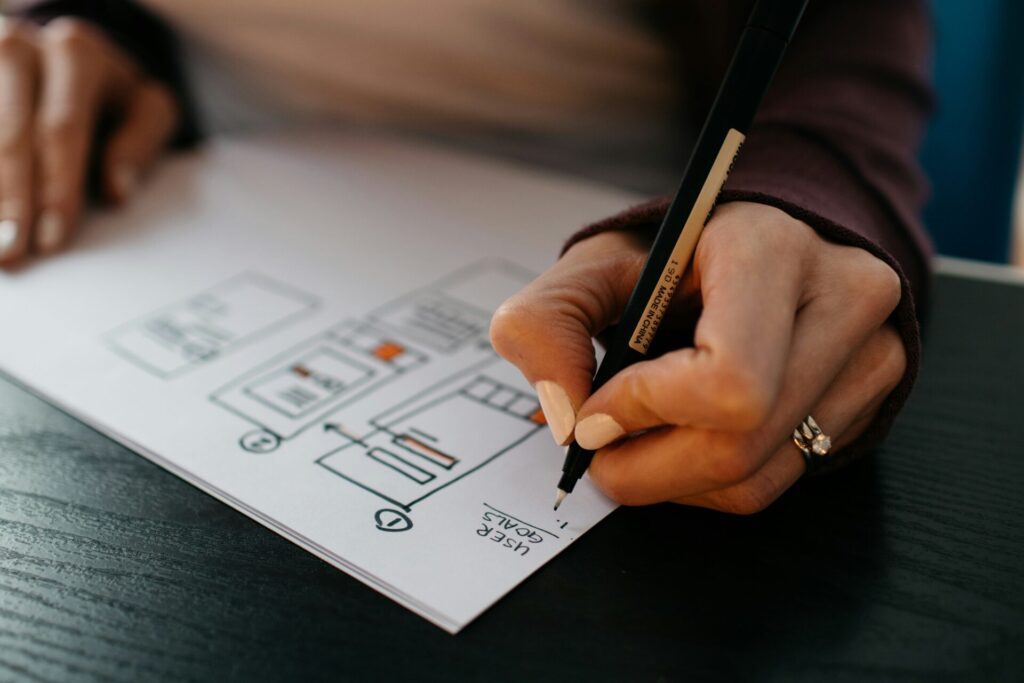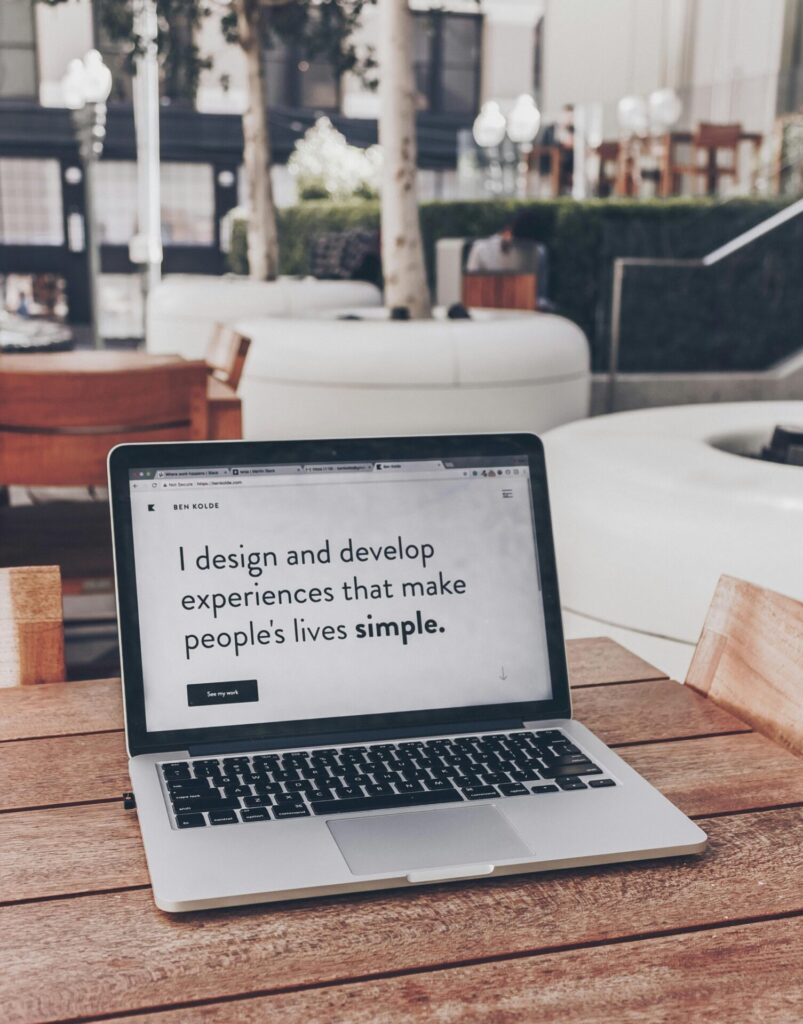Introduction
In today’s digital world, your website is often the first interaction potential customers have with your brand. A well-designed website is not just about aesthetics; it’s about creating a seamless user experience (UX) that engages visitors and encourages them to take action. This article will delve into the intricacies of expert website design services and how they contribute to a seamless user experience.

Understanding User Experience
What is UX?
User experience (UX) encompasses all aspects of a user’s interaction with a company, its services, and its products. It is the overall feel of the user’s experience, focusing on ease of use, efficiency, and satisfaction.
Key Elements of UX
- Usability: How easy and intuitive the website is to use.
- Accessibility: Ensuring everyone, including those with disabilities, can use the website.
- Performance: The speed and responsiveness of the website.
- Aesthetics: The visual appeal and overall design of the website.
The Role of Website Design in UX
Visual Appeal
A visually appealing website grabs the user’s attention and creates a positive first impression. Elements such as color schemes, typography, and imagery play a crucial role in making a website attractive.
Functionality
A website must be functional and easy to navigate. Broken links, slow loading times, and poor navigation can frustrate users and drive them away.
Responsiveness
With the increasing use of mobile devices, a responsive website design ensures that your website looks and works well on all screen sizes, providing a seamless experience for users regardless of the device they use.
Principles of Effective Website Design
Simplicity
Keeping the design simple and focused on the essentials helps users find what they need quickly and easily. A cluttered website can overwhelm users and detract from their experience.
Consistency
Consistency in design elements such as fonts, colors, and navigation creates a cohesive look and feel. It helps users become familiar with your website, improving their overall experience.
Accessibility
Making your website accessible to all users, including those with disabilities, is crucial. This includes using alt text for images, providing keyboard navigation, and ensuring your site is screen reader-friendly.
Visual Hierarchy
A well-designed website uses visual hierarchy to guide users’ attention to the most important elements. This can be achieved through the use of size, color, and positioning.
Simplicity in Design
Minimalist Approach
A minimalist design approach focuses on essential elements, reducing distractions and helping users focus on what matters. This enhances user engagement and improves the overall UX.
Avoiding Clutter
Cluttered websites can confuse users and make it difficult for them to find the information they need. Keeping the design clean and organized is key to a good user experience.
Enhancing Readability
Using legible fonts, adequate line spacing, and appropriate text size ensures that your content is easy to read, improving the user experience.
Consistency Across the Website
Uniform Design Elements
Using consistent design elements such as colors, fonts, and buttons throughout your website creates a cohesive and professional look.
Consistent Branding
Consistent branding helps reinforce your brand identity and makes your website recognizable to users. This includes using your logo, brand colors, and messaging consistently.
Navigational Consistency
A consistent navigation structure helps users easily find their way around your website, improving their overall experience.
Ensuring Accessibility
Importance of Accessibility
Ensuring your website is accessible to all users, including those with disabilities, is not only a legal requirement but also broadens your audience and improves UX.
Techniques for Improving Accessibility
Techniques include using alt text for images, providing keyboard navigation, ensuring sufficient color contrast, and using accessible forms.
Tools for Accessibility Testing
Tools like WAVE, AXE, and Lighthouse can help you test and improve your website’s accessibility, ensuring it meets the necessary standards.
Implementing Visual Hierarchy
Using Size and Color
Larger elements and contrasting colors can help draw attention to the most important parts of your website, guiding users through your content.
Prioritizing Content
Prioritizing content helps users find the most important information quickly, improving their overall experience.
Guiding User Attention
Using visual cues such as arrows, lines, and highlighted areas can guide users’ attention to key elements on your website.
The Importance of Responsive Design
Mobile-Friendly Design
A mobile-friendly design ensures that your website looks and functions well on all devices, providing a seamless experience for users on the go.
Benefits of Responsive Websites
Responsive websites offer better user experiences, higher engagement rates, and improved SEO rankings.
Techniques for Responsive Design
Techniques include using flexible grids, scalable images, and media queries to create a responsive design that adapts to different screen sizes.
Functionality and Performance
Fast Loading Times
Fast loading times are crucial for a good user experience. Users are likely to leave a website that takes too long to load.
Easy Navigation
Easy and intuitive navigation helps users find what they need quickly and easily, improving their overall experience.
Error-Free Functionalities
Ensuring that all functionalities on your website work correctly is essential for providing a seamless user experience.
User-Centered Design Process
Research and Analysis

Understanding your users’ needs and preferences is the first step in creating a user-centered design. This involves conducting research and analysis to gather insights.
Wireframing and Prototyping
Wireframing and prototyping help you visualize and test different design concepts before finalizing the design.
User Testing and Feedback
Conducting user testing and gathering feedback helps you identify and address any issues, ensuring that the final design meets user expectations.
SEO and Website Design
Importance of SEO-Friendly Design
An SEO-friendly design helps improve your website’s visibility in search engine results, driving more traffic to your site.
Techniques for SEO Optimization
Techniques include using proper heading tags, optimizing images, using descriptive URLs, and ensuring fast loading times.
Tools for Monitoring SEO Performance
Tools like Google Analytics, SEMrush, and Ahrefs can help you monitor and improve your website’s SEO performance.
Trends in Website Design
Current Trends in 2024
Current trends include minimalistic design, dark mode, interactive elements, and AI-driven personalization.
Emerging Technologies
Emerging technologies such as AR/VR, voice search, and AI are shaping the future of website design.
Future of Website Design
The future of website design will be driven by user experience, with a focus on personalization, accessibility, and advanced technologies.
Choosing the Right Website Design Service
What to Look for in a Design Service

When choosing a website design service, look for expertise, experience, and a portfolio that aligns with your vision.
Questions to Ask Potential Designers
Ask about their design process, experience with similar projects, and how they handle revisions and feedback.
Evaluating Portfolios and Testimonials
Reviewing portfolios and testimonials can give you insights into the designer’s style and the quality of their work.
Conclusion
Expert website design services play a crucial role in creating a seamless user experience. By focusing on simplicity, consistency, accessibility, and responsiveness, you can create
